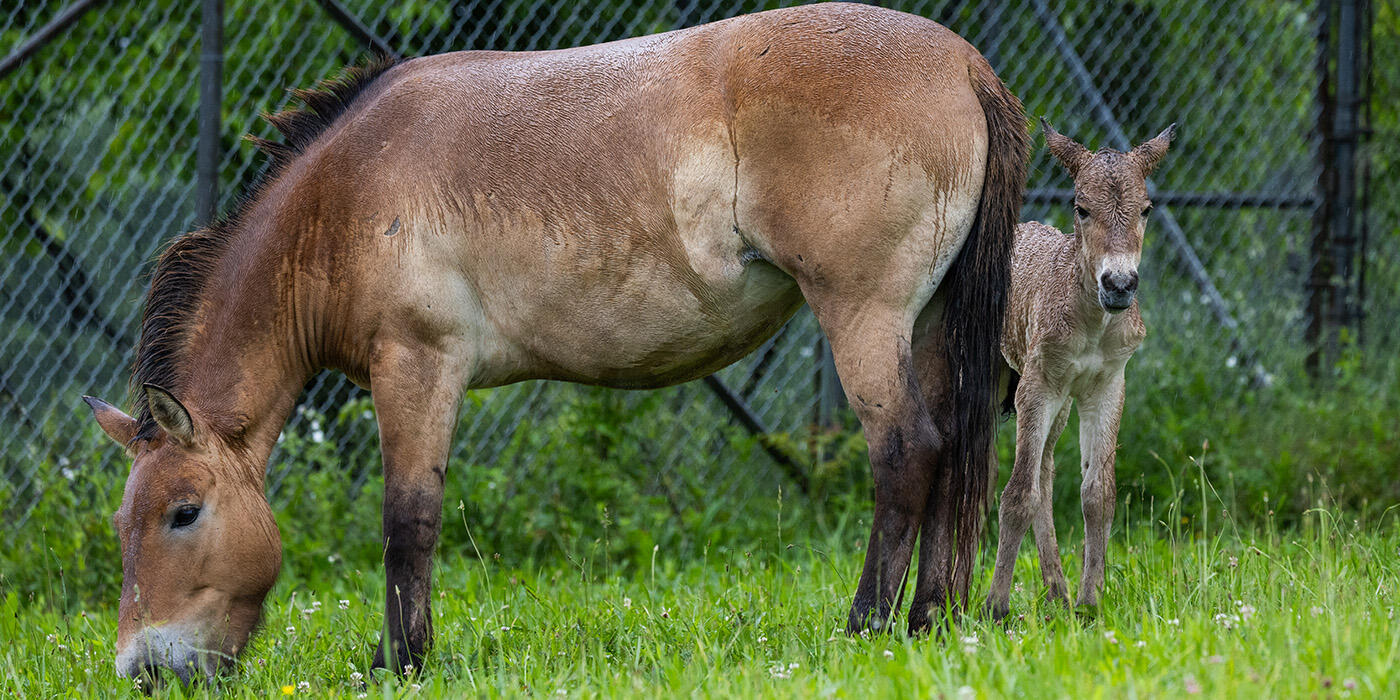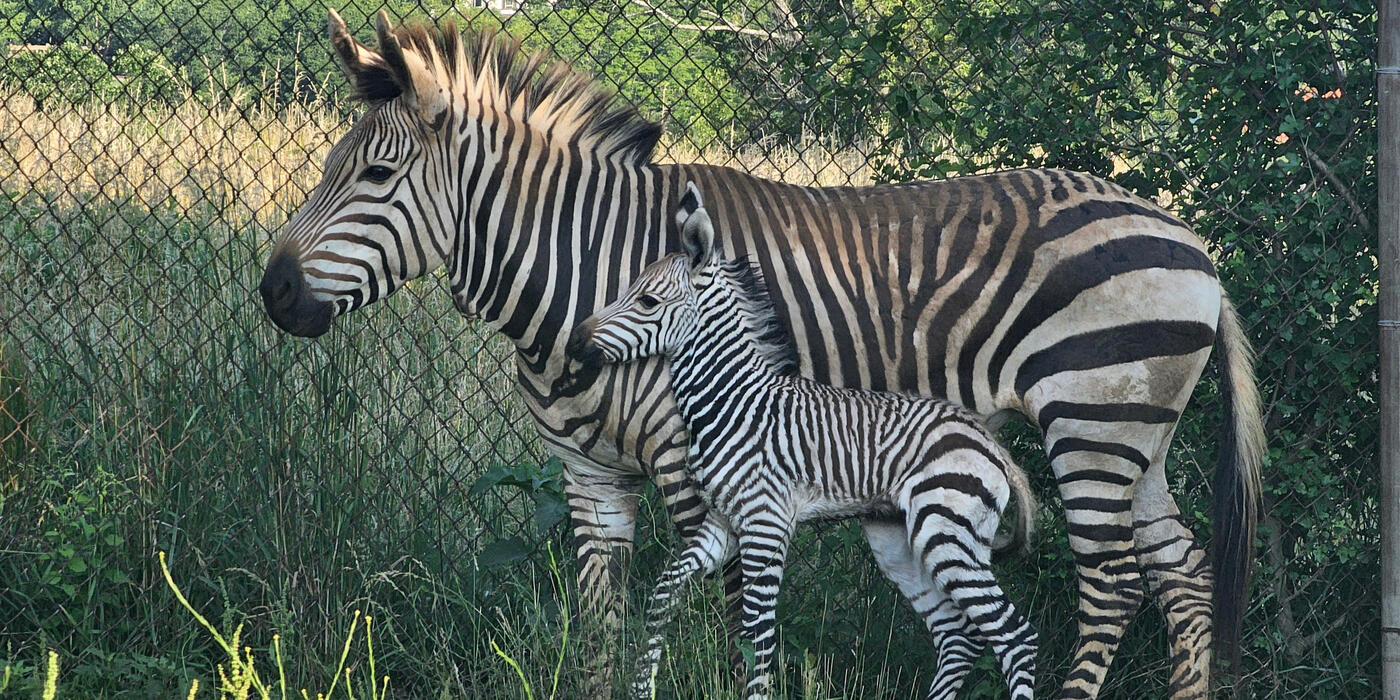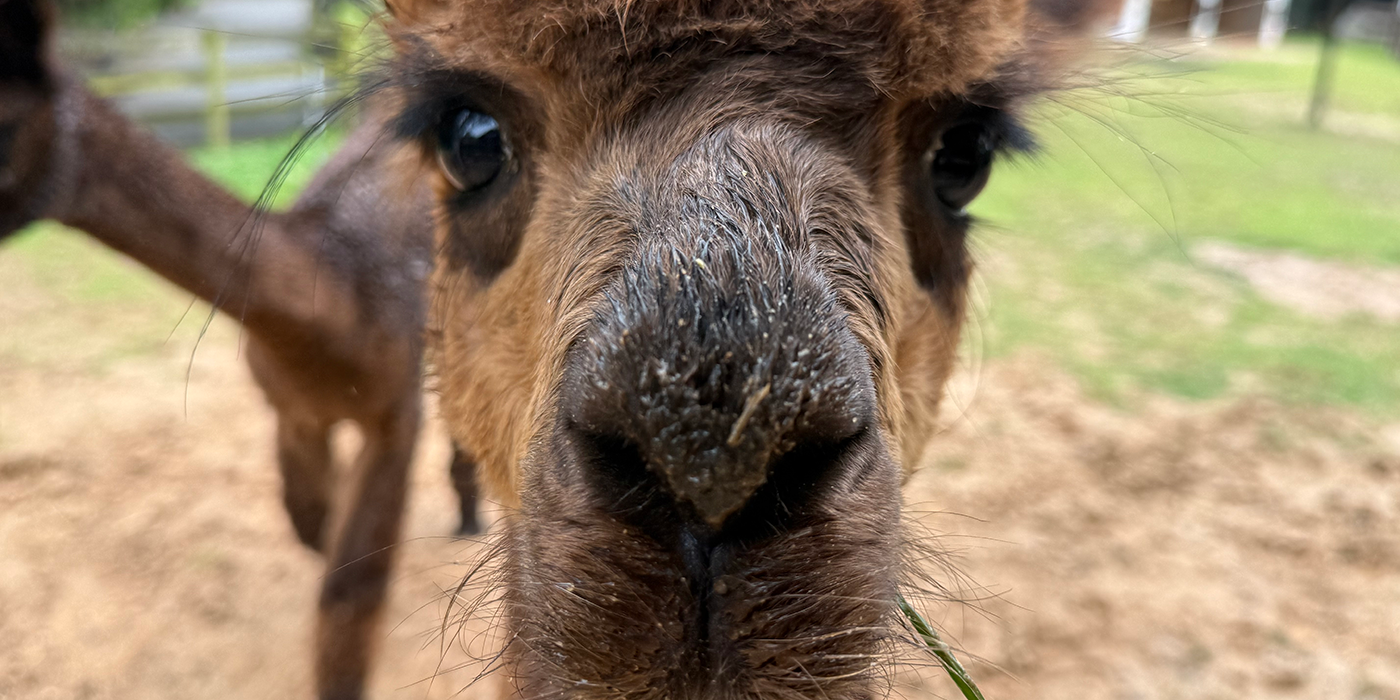How Are Animal Matches Made at the Zoo?
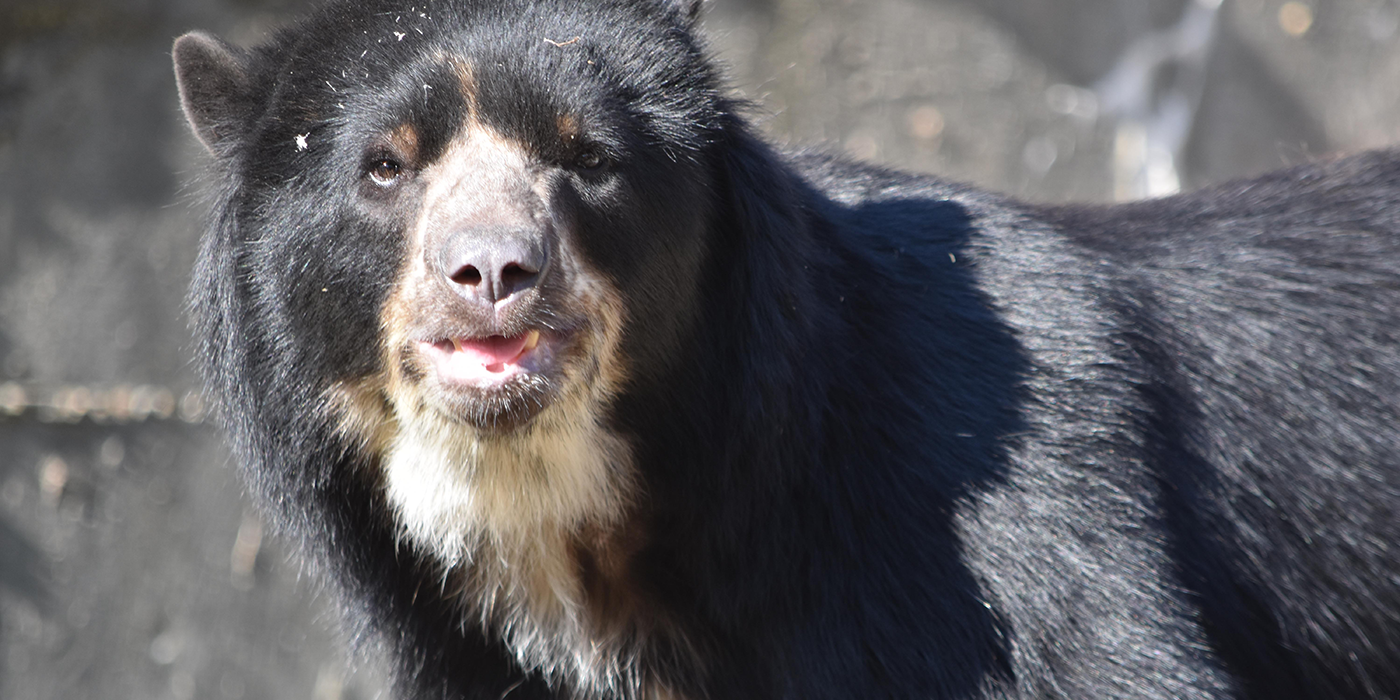
For conservation scientists at the Smithsonian’s National Zoo and Conservation Biology Institute, helping animals “swipe right” on the best mate is all in a day’s work.
With a mission to save animal species from extinction, a key part of the conservation work happening each day at the Zoo involves helping rare and vulnerable animals date, mate and procreate.
But how do zoos coordinate animal matches? How do you figure out compatibility, especially for solitary species? And how do you plan ahead so matches aren’t all related in one or two generations?
Animal “matchmakers” on the job
Kate Rodriguez-Clark is an animal matchmaking guru. Among her responsibilities as a population ecologist for the Smithsonian, she helps Zoo staff plan for the future of large groups, or populations, of animals.
“To have animals in our care to save species, zoos can’t always just collect them in the wild. For some species that's fine given the wild population size, but for others it could put them in danger. So instead, mostly we produce them from animals that are already in zoos,” said Rodriguez-Clark.
The Smithsonian is a member of the Association of Zoos and Aquariums (AZA), a cooperative network of 237 zoos and animal care facilities across North America and the world. Animal breeding must be coordinated throughout the entire AZA network, Rodriguez-Clark explained, because individual zoos typically don’t have large enough animal populations to tackle this work singlehandedly.
“Most zoos have only a few individuals of a given species, and they might be related to each other,” she said. “So, maintaining a healthy, genetically viable population requires a lot of careful cooperation across a lot of institutions.”
Together, this network sets goals for their populations, like growing the total number to make reintroductions possible, or keeping the population size stable.
Using zoo data, Rodriguez-Clark crunches the numbers to identify ideal “matches” to meet our long-term population needs—helping figure out which animals should attempt to reproduce with each other.
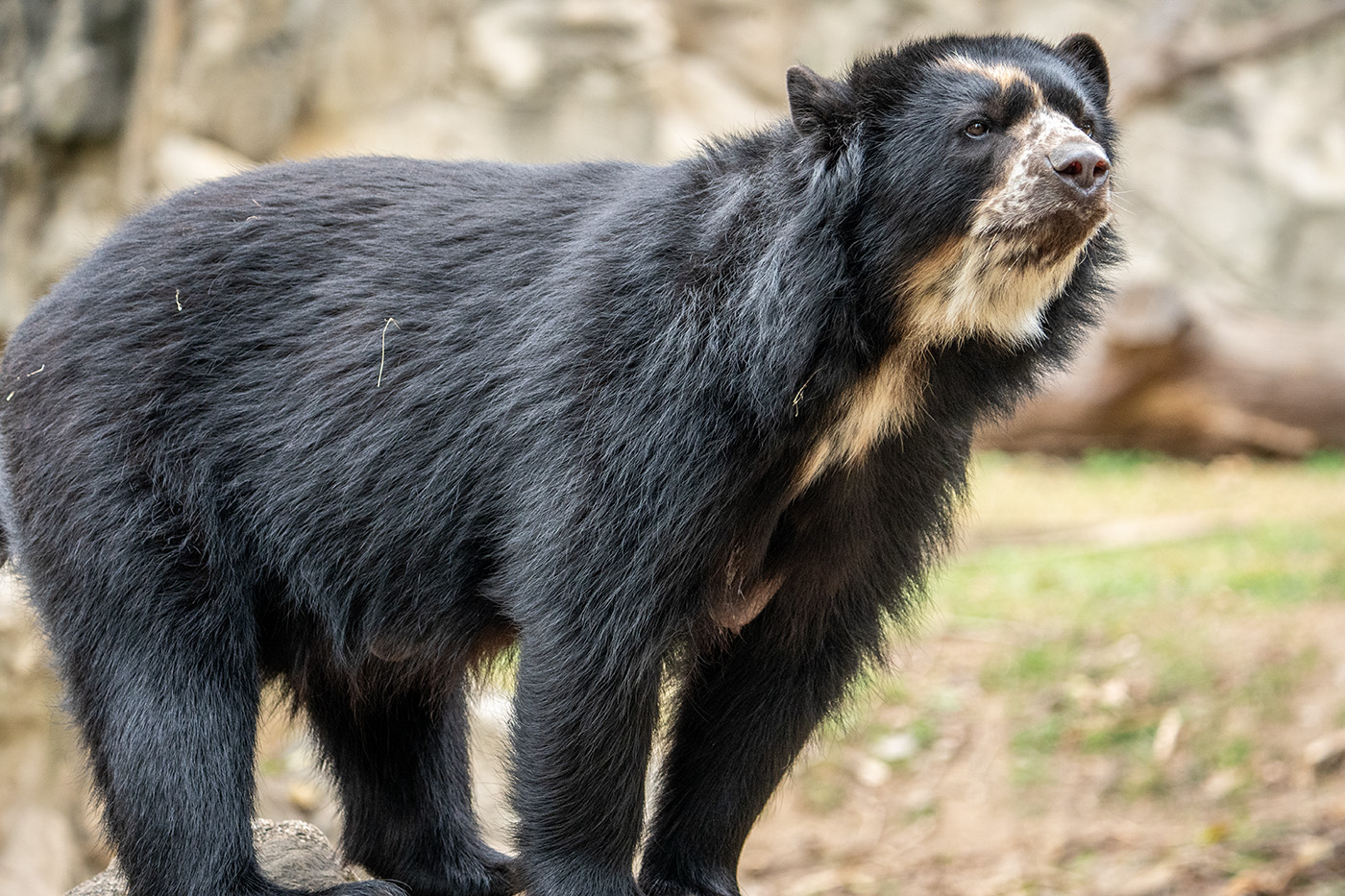
At the Smithsonian’s National Zoo, a team of animal matchmaking experts matched female Andean bear Brienne (above) with a compatible mate, Quito (top). Brienne arrived in 2020, and the pair produced two cubs in the fall of 2022.
Saving species with a “Dating App” for animals
If you’re a human creating an online dating profile, you usually include some basic questions about your lifestyle and preferences— your job, your hobbies, what television shows you watch or what food you like.
Of course, it wouldn’t be all that useful to know whether a particular animal—for example—enjoys watching The Office, or has strong feelings about whether pineapple belongs on pizza. But what does prove to be helpful is the information about the animal’s life and history.
That’s why zoo managers coordinate records that hold detailed information on the life and history of animals at their facilities. These records, called studbooks, contain the birthdays, parental information, and location of every animal in the population.
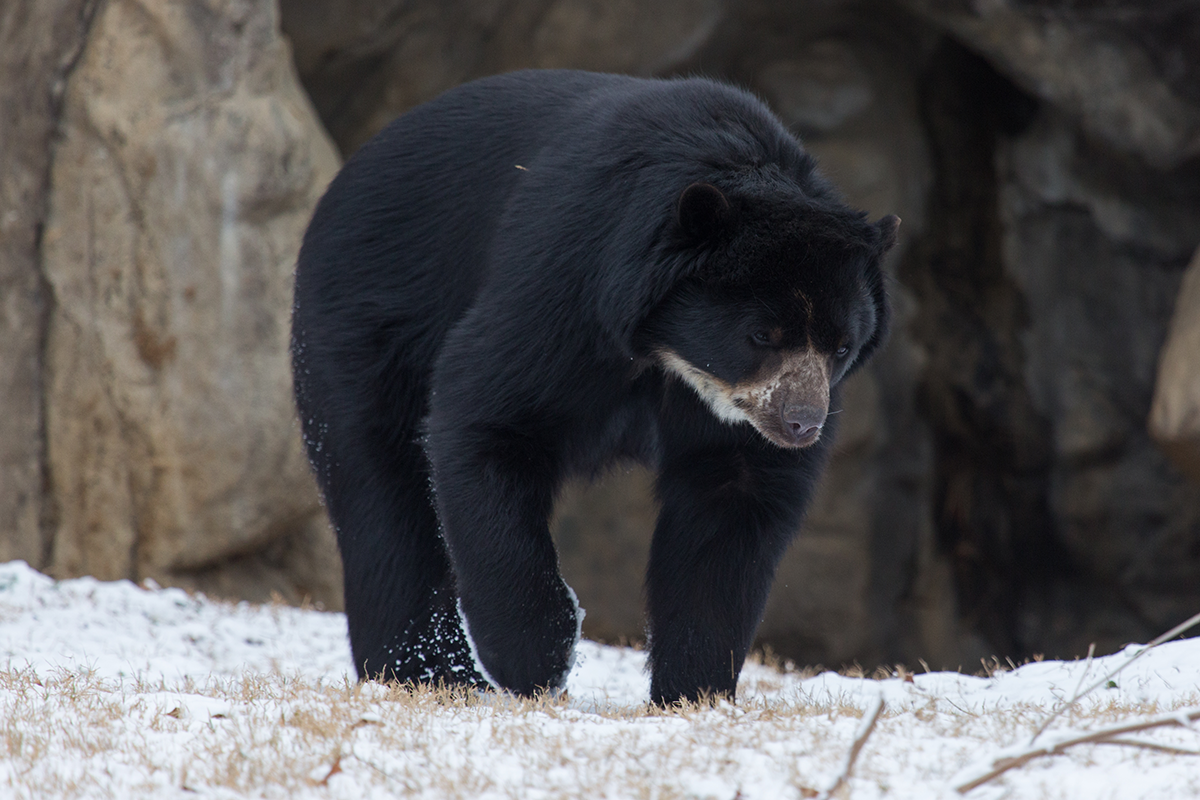
Studbooks contain biographical information about individual animals, including Andean bear Quito (above.) Coordinators often track other data points that could prove useful for breeding, like health and temperament.
One of the major aims of this record-keeping bonanza is to supply relevant information that population biologists like Rodriguez-Clark can use to understand how far animals are from each other on the family tree. From there, zoo managers can decide which animal pairs would be ideal for producing the next generation and keeping the population going in the years to come.
“We use a few different computer systems and programs to do these analyses, so sometimes people jokingly call this ‘computer dating for animals’,” she said.
Of course, finding good matches on paper is only part of the story. Just like with humans, a big part of finding the right partner also comes down to animal attraction.
How animal matches are made
Sara Colandrea wears many hats. She’s a keeper at the Smithsonian’s National Zoo. She’s also the official record keeper for all 30 Andean bears in the AZA population. Plus, she’s the AZA’s Andean Bear Species Survival Plan coordinator, which places her in the unique position of advising zoos within the network on how they should work together to manage breeding pairs of Andean bears.
“Based on the information Kate gives me, I make recommendations on who should breed with whom, which bears go to what facilities to make new pairs, or who stays with each other to continue breeding,” Colandrea said.
Some animals might not be a behavioral or personality match. Or they could be too old or too young to be paired up, Colandrea explained. The remaining bachelors and bachelorettes are ranked on a scale of one to seven. A pair of two animals that receives a “one” means they’re a great pair and zoo managers should definitely try to get them to breed. If they receive a “seven”, that probably means they’re either siblings or cousins, which is a no-go for genetic diversity.
After the rankings are sorted, Colandrea connects with zoo managers to create breeding and transfer plans for individual Andean bears.
“We consider matches in terms of, ‘in a hundred years, if we continued breeding at this rate and with the current numbers, would we still have a genetically viable population?’” she said.
A “reserve” bear group would be invaluable if disaster were to strike the wild Andean bear population, said Colandrea. With fewer than 18,000 left in the wild, a healthy, genetically diverse group from zoos could prove to be the essential lifeline that keeps their species from perishing from the planet.
If that sounds like a far-off possibility, consider that it’s already happened with the scimitar-horned oryx. And the Guam sihek. And the black-footed ferret and the Mexican wolf. Each species was saved from extinction and reintroduced back into the wild after captive breeding programs steadily boosted their numbers.
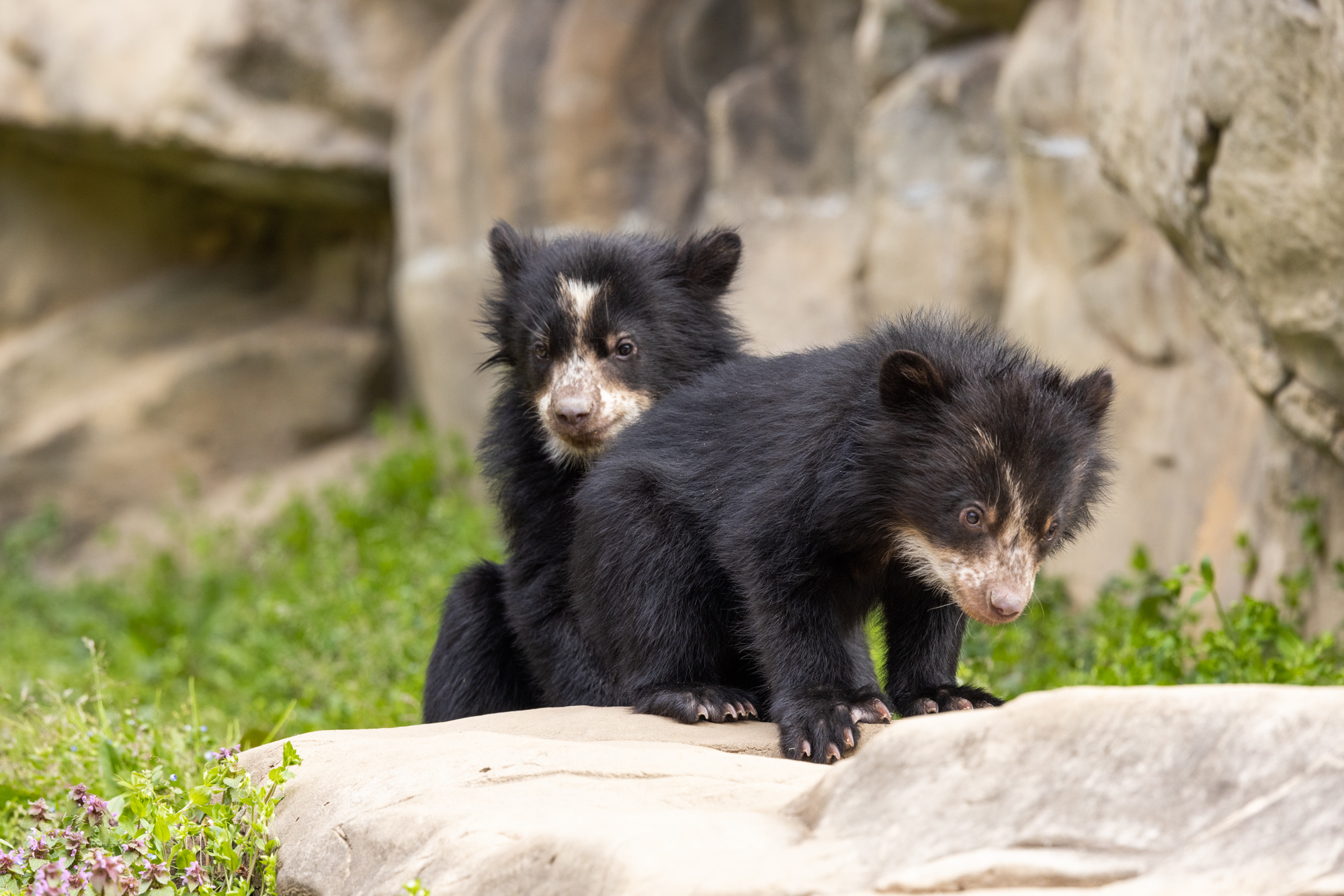
Andean bear cubs Ian (left) and Sean (right), pictured shortly after being born to male Quito and female Brienne at the Smithsonian’s National Zoo in October 2022. Four litters of cubs have been born at Smithsonian since 2010.
What animal “dating” is like
Humans, of course, decide whether they’re attracted to each other through dating. For animals, the process looks different depending on the species involved.
Breeding patterns vary based on species, so Zoo managers cultivate in-depth knowledge of reproductive cycles to set the animals up for success.
Some animals, like ducks, have a “breeding season,” which means keepers only need to watch for amorous overtures in the springtime. The waterfowl at the Bird House have a dazzling variety of courtship rituals: females can expect to be presented with some combination of quacks, wing flaps, head bobs, dives, shimmying and other routines from prospective partners.
Others, like gorillas and other great apes, are capable of breeding year-round, which means zoo staff need to devise birth management plans to keep males and females from reproducing too rapidly. (For example, most female zoo apes are on birth control—the same pills that humans take.)
Researchers have observed that Andean bears in the wild tend to travel by themselves and are usually only spotted together when it’s breeding season. Managers at the Zoo follow this natural cycle by having male and female Andean bears live separately for most of the year, and attempt cohabitation only when the female is interested in reciprocating mating attempts from the male.
Behind the scenes of many animal habitat areas, mesh-covered barriers called “howdy gates” allow animals in separate exhibit areas to see, hear and smell each other.
Of course, Andean bears don’t send texts or buy flowers when they’re interested in mating. But keepers still get a good sense of the bears’ enthusiasm based on how they behave around the gate.
“When the females don’t want to see the male, they’ll charge the gate, huff at them, things like that. But when they do, the females will sit calmly, they’ll sniff, they’ll try to lick the nose of the male bear or try to touch them through the howdy door with their paws,” she said.
Sometimes there’s a desire on behalf of both animals, but an experience gap gets in the way, said Colandrea. In that case, Zoo staff might consider pairing a “proven” animal—one with experience successfully breeding—with an inexperienced one that might not have been able to work it out last time.
Just like with humans, sometimes all you need is for someone to make the first move.
Courtship for a cause
As with any scientific discipline, researchers’ understanding of animal breeding continues to evolve. Giant panda breeding cycles regularly make headlines, but for species outside of the limelight, researchers make new discoveries all the time.
For example, the scientific consensus used to be that all wild Andean bears breed at roughly the same time of year. But wildlife researchers across South America have observed cases of bears breeding at different points of year depending on where they live, implying Andean bears in Colombia might have a completely different breeding cycle than those in Peru, Colandrea said.
In other words, when it comes to animal courtship, there’s still plenty of mystery involved.
And isn’t that part of what makes it fun?
Related Species:

